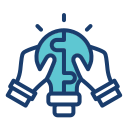Leveraging Technology for Remote Workforce Management
Real-Time Messaging Platforms
Real-time messaging platforms have revolutionized how remote teams interact by providing instant, informal channels for discussion, decision-making, and problem resolution. These tools foster a sense of togetherness, simulating the spontaneous interactions that occur in traditional office environments. Employees can share updates, clarify questions, or organize impromptu meetings on the fly. This immediacy minimizes delays in project workflows and helps individuals maintain a strong connection to their team, even when working from different locations or time zones.
Video Conferencing Solutions
Video conferencing technology serves as the backbone of remote meetings, replacing in-person gatherings with virtual face-to-face interactions. This not only enables regular check-ins and collaboration but also plays a crucial role in relationship-building and organizational culture. The visual and auditory cues provided by video calls facilitate better understanding and reduce the risk of misinterpretation, allowing for more productive discussions and effective leadership oversight. Scheduled and spontaneous video meetings keep teams closely knit and engaged.
Collaboration Hubs and Document Sharing
Centralized collaboration hubs and document-sharing platforms act as the digital workspace for remote teams. These solutions streamline the process of co-authoring documents, tracking changes, and accessing shared resources in real time. Team members can contribute to projects simultaneously, ensuring everyone stays up-to-date and can easily locate the information they need. This transparency promotes accountability, accelerates project progress, and minimizes bottlenecks by making collaboration seamless and efficient.
Previous slide
Next slide

Digital Time and Attendance Systems
Digital time and attendance systems have become essential in managing remote teams, offering reliable tools for monitoring employee check-ins, breaks, and hours worked. These platforms replace manual tracking, reducing administrative overhead and minimizing errors. Employees enjoy greater flexibility, while managers can spot trends, prevent overworking, and ensure accurate compensation. Automated reminders and reporting features also simplify compliance with labor laws and internal policies, providing peace of mind for all stakeholders.
Task and Project Management Tools
Task and project management tools empower remote teams to organize their workloads, set deadlines, and monitor progress in a transparent, centralized environment. Managers can assign responsibilities, track deliverables, and quickly identify potential bottlenecks that may hinder progress. Integrated notification systems keep everyone informed of changes and upcoming milestones, enabling swift adaptation to shifting priorities. These tools support both independent work and coordinated group efforts, ensuring alignment across distributed teams.
Performance Analytics and Reporting
The integration of performance analytics and reporting capabilities enables leaders to make informed decisions based on objective data. Dashboards display key performance metrics, helping managers recognize high achievers and identify areas for improvement. Regular reports support constructive feedback and development conversations, fostering a culture of continuous improvement. By visualizing trends and outcomes, analytics drive accountability and provide the insights needed to optimize processes and outcomes in a remote work environment.
Previous slide
Next slide
Ensuring Security and Data Integrity in Remote Operations
Secure Access and Authentication Solutions
Remote workforce management depends on reliable, secure access to corporate systems. Advanced authentication solutions, such as multi-factor authentication and single sign-on, ensure that only authorized personnel can access sensitive data and applications. By mitigating risks of unauthorized access, organizations create a safer digital environment for distributed teams. These security layers deter cyber threats while facilitating a hassle-free login experience, balancing security with user convenience.
Data Encryption and Cloud Security
Data encryption and cloud security measures are fundamental to protecting information as it moves between remote devices and centralized servers. Encrypted communication channels, file storage, and data backups ensure that confidential materials remain inaccessible to unauthorized parties. Cloud platforms with robust security certifications provide scalable, accessible environments for document sharing and collaboration while adhering to strict regulatory standards. This level of protection is crucial for building trust among employees, clients, and partners.
Employee Cybersecurity Training
Human error remains one of the biggest security risks in remote work. Comprehensive cybersecurity training equips employees with the knowledge and skills to recognize threats like phishing, social engineering, or unsafe browsing. Regular educational sessions encourage best practices in password management, software updates, and safe data handling. Empowering staff to act as the first line of defense reduces vulnerabilities and ensures that everyone in the organization understands their role in maintaining data integrity.
